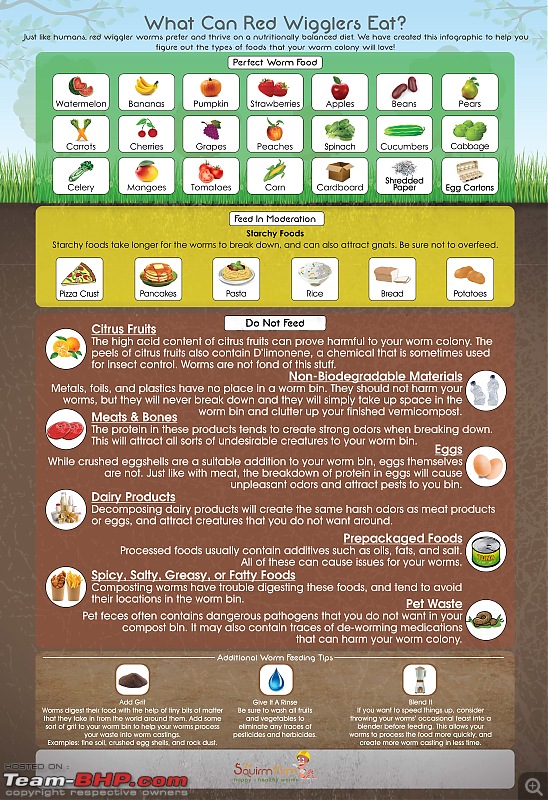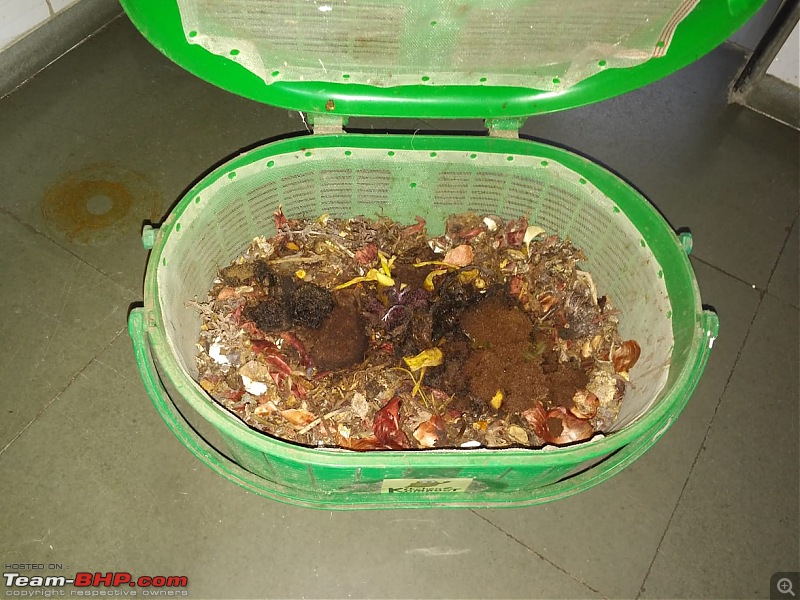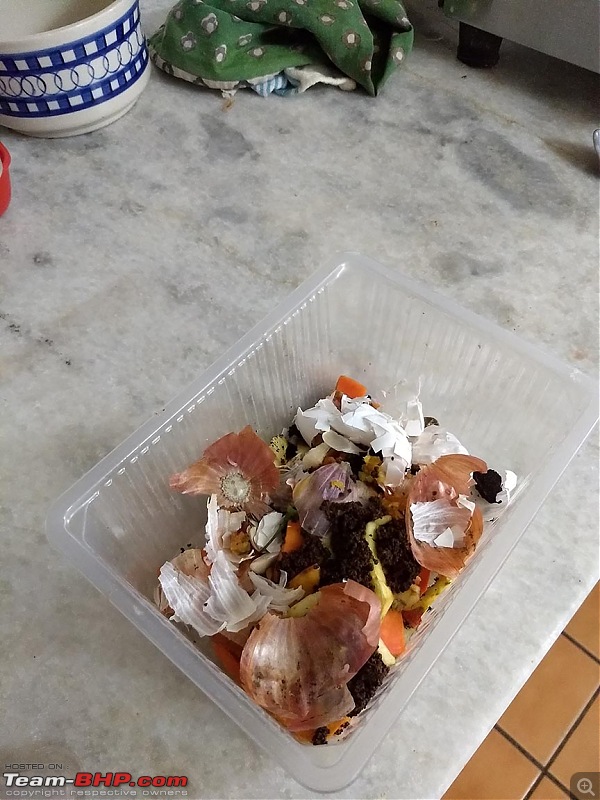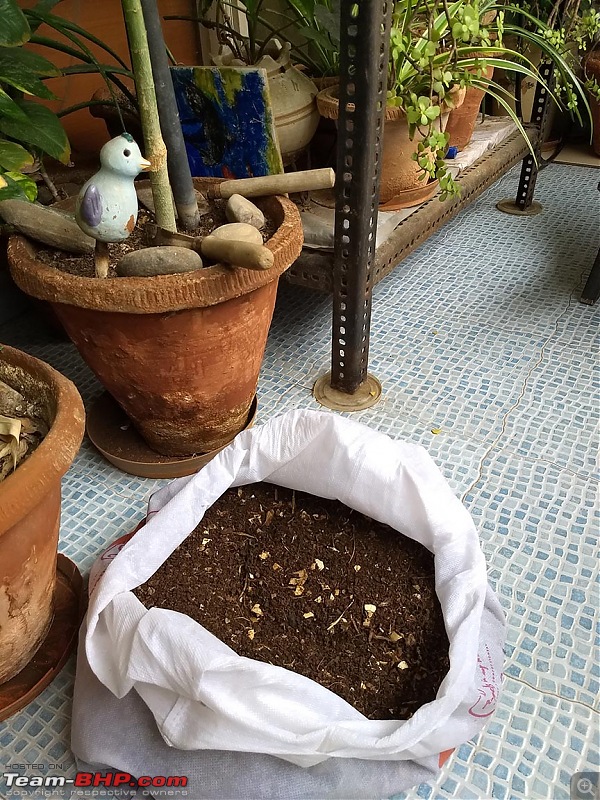Vermicomposting at Home
Driving a diesel sedan in Delhi made me feel guilty. Reducing consumption didn’t make me feel any better so, started looking for options on how I could reduce my carbon footprint. Bought houseplants and one day while searching on how to care for houseplants found out about Vermicomposting. Dug a bit deeper and thought why not to start? It would reduce the guilt I was having as well as my contribution to filling up landfills.
Vermi-Composting is nothing but composting with the help of worms.
Now, you might be wondering what is the use and why when there is already door step garbage collection available?
It is because it has many benefits, some of them I’ll mention here:
- All the food which is thrown away decomposes in landfills and produces methane, which is a greenhouse gas and causes global warming. It helps in preventing global warming.
- 100% Organic fertiliser (also known as Black Gold) is an outcome of the process.
- Worm Tea - Liquid fertiliser can be prepared from this compost.
- Waste production is reduced and gives a chance to become more eco-friendly.
- Organic fruits and vegetables can be grown from this compost.
Time Required:
It just takes 2 hours once to get started and once when the bin is full and compost is ready to be harvested. Even if you can’t spare time, almost all of us have domestic staff/keepers which do our household chores. They can do it for you, just teach them on how to do it. It’s a one time thing.
To get started 2 dustbins are required - One for wet waste and another for dry waste. Wet Waste dustbin should have all the degradable materials such as fruit and vegetable peels, tea bags etc. Dry Bin should have materials which are non biodegradable such as plastic wrappers, packaging materials, etc.
Where to get the worms from?
Worms can be purchased from any local nursery, or any acquittance who does vermicomposting and can share these with you. Only few of them are required as they multiply rapidly. If you can’t get them from these sources then “Krishi Vigyan Kendra (KVK)” keeps them. Just locate the nearest KVK. They retail for Rs. 250/kg. Even agricultural universities stock them.
How to make a home for them? Materials Required: - Earthen Pot (Recommended) or any container
- A stand for earthen pot
- A storage container to collect excess water which percolates.
- Coco Peat / Coconut Coir
- Old Shredded Newspapers / Cardboard (Amazon, Flipkart packaging boxes)
- Red Wigglers Worms
- Old Food scraps
How to set it up - An Earthen Pot with a lid & stand - Lid is required to protect worms from foreign objects and light. Worms hate light and whenever they sense it they start burrowing deep to avoid it. Under the stand keep a container to collect Leachate. Leachate can be reused in the bin after 1-2 days.
- Holes for ventilation - Holes need to be made on the pot for ventilation. Though earthen pots have microscopic holes, still a bit large holes are recommended. You can drill the holes or ask the pot seller to do it for you.
- Make a hole at the bottom of the container to let water percolate. The liquid which is collected at the bottom of the pot is called leachate. It can be reused by diluting it in water or putting it back in the bin after 1-2 days.
- Stuff in some wet newspapers in the pot. This creates bedding for them.
- Stuff in some coco peat or coconut coir as they retain moisture. Worms need wet surroundings for their survival. Even their body is made up of about 90% water.
- Put in some food scraps
- Put in worms over the food scraps
- Occasionally spray some water and you’re done!
Items which can be put in the bin:
Food scraps which contain SALT and CITRUS should be avoided. Scraps like fruit peels, vegetable peels, boiled vegetables, rice without SALT, tea/coffee filters/bags, paper with black ink, leaves, crushed egg shells. Even meat and other products can be put in but they attract rodents flies and other insects, so they are not recommended.
Source: The Squirm Firm Fun Fact: Worms cannot harm humans in any form so there is no need to be afraid of them. They don’t have eyes or teeth so they cannot follow or bite you.

They breathe through their skin. They hate light and even if for once they escape from container they cannot move beyond 2-2.5 feet (Maximum distance they can crawl on land).
Some mistakes which you may make:
Overfeeding - Overfeeding is the most common cause of killing the worms. What actually happens is when you put in too much scraps which they can’t eat the scraps start to decompose and while it happens it raises the temperature of the bin and makes whole bin anaerobic.
Feeding Salty/Lime Products - Never put in any product which contains salt so it is advisable to put in scraps which are natural and unprocessed like vegetable peels, fruit peels, tea/coffee bags etc. Sugar is acceptable but it may attract ants if not covered properly in bedding.
Watering - The bin needs a certain level of moisture so watering is a must but it can be done after a few days, everyday is not required. My bin can sustain more than a week of water but I usually water it on weekend.
A worm can eat half his weight in a day. So put the scraps according to the quantity you have.
Result
The final compost looks like tea - soft non-sticky and pure black.
 (Source: Google Images)
(Source: Google Images)
I had put mango scraps in and from a kernel, this plant started.
Seedling from kernel
This is my bit of conserving environment and reducing waste from landfills which in some parts of our country are now as high as Qutub Minar. If some people start composting after reading my post at their homes, colonies, societies my purpose of writing this post is fulfilled. This is how we can contribute our bit to save the environment!
 (1)
Thanks
(1)
Thanks










 They breathe through their skin. They hate light and even if for once they escape from container they cannot move beyond 2-2.5 feet (Maximum distance they can crawl on land).
They breathe through their skin. They hate light and even if for once they escape from container they cannot move beyond 2-2.5 feet (Maximum distance they can crawl on land). 













